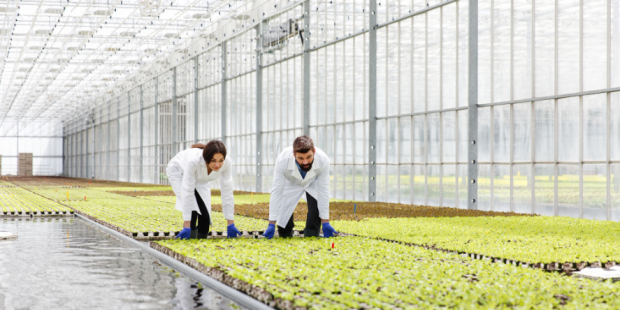Agriculture is one of the oldest and most essential human activities. It is the cultivation of plants and animals for food, fibre, fuel, and other products for sustaining life. Agriculture originated about 12,000 years ago in different regions of the world when people began to domesticate wild plants and animals and settle in permanent villages. Since then, agriculture has evolved through various stages of development, from subsistence farming to industrial agriculture, to meet the growing demands of a rising population and a changing environment. In this blog, we will discuss sustainable agriculture practices with concepts, examples, and benefits. We will also look at the significance of sustainable agriculture, the challenges faced in implementing it, and ways to promote environment-friendly agriculture with some examples.
Why is Agriculture needed?
Agriculture is vital for human well-being, as it provides food security, nutrition, income, and livelihoods for billions of people around the world. According to the Food and Agriculture Organization (FAO), agriculture employs about 28% of the global workforce and contributes about 4% of the global gross domestic product (GDP). Moreover, agriculture accounts for about 50% of the world’s food supply, while the rest comes from fisheries, aquaculture, forestry, and other sources.
A double-edged sword: is agriculture a friend of the environment or a foe?
However, agriculture also has significant impacts on the environment, both positive and negative. On one hand, agriculture can enhance the environment by conserving soil, water, biodiversity, and ecosystem services, as well as mitigating climate change by sequestering carbon and reducing greenhouse gas emissions. On the other hand, agriculture can degrade the environment by causing soil erosion, water pollution, deforestation, biodiversity loss, land degradation, and greenhouse gas emissions. These environmental problems can threaten the sustainability and resilience of agriculture itself, as well as the health and well-being of humans and other living beings. Therefore, there is an urgent need to make agriculture more environmentally friendly and sustainable.
Sustainable Agriculture: Concepts and Examples

Sustainable agriculture is a system of farming that aims to provide sufficient food and other products for present and future generations while minimizing the negative environmental impacts and enhancing the positive ones. Sustainable agriculture is based on the principles of agroecology, which is the application of ecological concepts and principles to the design and management of agricultural systems. Agroecology promotes farming practices that are adapted to local conditions, diversified in crops and livestock, integrated with natural cycles and processes, and respectful of cultural and social values. Some examples of sustainable agricultural practices are organic farming, agroforestry, natural farming, conservation agriculture, crop rotation and diversification, cover cropping, integrated pest management, vermicomposting, biodynamic farming, contour farming, integrated farming systems, rainwater harvesting, artificial recharge of groundwater, floating farming, permaculture, and many others.
Benefits of sustainable agriculture
The significance of sustainable agriculture in today’s world is immense. Sustainable agriculture can contribute to several global goals and challenges, such as:
- ending hunger and malnutrition,
- reducing poverty and inequality,
- protecting the environment and combating climate change,
- preserving biodiversity and ecosystem services,
- promoting human health and well-being, and
- enhancing social justice and peace.

However, several challenges need to be overcome to achieve the benefits of sustainable agriculture. Some of these challenges are:
- Lack of awareness and knowledge among farmers and consumers about the benefits and practices of sustainable agriculture
- Lack of access to markets, credit, insurance, extension services, infrastructure, and technology for sustainable agriculture
- Lack of supportive policies and incentives that favour sustainable agriculture over conventional agriculture
- Lack of coordination and collaboration among different stakeholders involved in agricultural systems
- Lack of research and innovation that address the specific needs and opportunities of sustainable agriculture
How countries can promote sustainable agriculture
Despite these challenges, there are also many opportunities to make agriculture more environmentally friendly. Various stakeholders in agriculture can act on these opportunities and promote sustainable agriculture. Some of these opportunities include:
- Increasing consumer demand for organic and fair-trade products that support sustainable agriculture This can create market incentives for farmers to adopt sustainable practices and reward them for their efforts.
- Increasing public awareness and education about the environmental impacts of agriculture and the benefits of sustainable agriculture. This can help consumers make informed choices about their food purchases and encourage farmers to learn new skills and technologies.
- Increasing investment and funding for research and development on sustainable agricultural technologies and practices. This can foster innovation and the dissemination of knowledge that can improve the productivity, profitability, and resilience of farming systems.
- Increasing the participation and empowerment of farmers’ organizations and civil society groups in decision-making processes related to agricultural policies and programs. This can ensure that the voices and interests of farmers are heard and respected and that they have access to resources and opportunities that can support their livelihoods.
- Increasing cooperation and partnership among governments, international organizations, the private sector, academia, and non-governmental organizations in promoting sustainable agriculture. This can facilitate the exchange of information, experience, and best practices, as well as the coordination of actions and interventions that can address the complex challenges of sustainable agriculture.
These are some of the possible ways countries worldwide can promote sustainable agriculture. However, there is no one-size-fits-all solution, as each country and region have their own specific context, needs, and opportunities. Therefore, it is important to tailor the promotion strategies to the local conditions, cultures, and preferences of the farmers and consumers.
Success stories of sustainable agriculture
Here is a list of countries that have successfully implemented sustainable agriculture practices.
- Brazil: Brazil has transformed its agriculture sector by adopting the principles of integrated crop-livestock-forest (ICLF) systems, which combine different types of crops, animals, and trees in the same area. This helps to improve soil quality, reduce greenhouse gas emissions, increase biodiversity, and enhance productivity and profitability.
- China: China has invested in the research and development of sustainable agriculture technologies such as drip irrigation, biogas digesters, and biochar production. These technologies help to conserve water, reduce fertilizer use, and enhance soil fertility. China has also promoted the adoption of organic farming and agroforestry practices among smallholder farmers.
- Vietnam: Vietnam has implemented the System of Rice Intensification (SRI), which is a set of practices that optimize the use of water, seeds, and organic inputs to increase rice yields and quality. SRI also reduces methane emissions and water pollution from rice paddies. Vietnam has also supported the development of farmer cooperatives and value chains for sustainable agricultural products.
- Switzerland: Switzerland has enacted a series of policies and incentives to support sustainable agriculture, such as payments for ecological services, subsidies for organic farming, and regulations on animal welfare and pesticide use. Switzerland has also encouraged the participation of farmers and consumers in shaping the food system through direct democracy and local initiatives.
- Cuba: Cuba has adopted a model of low-input urban agriculture that involves growing food in vacant lots, rooftops, balconies, and backyards using organic methods and recycled materials. This helps to increase food security, reduce dependence on imports, and create employment opportunities for urban dwellers. Cuba has also fostered a culture of innovation and cooperation among farmers through farmer-to-farmer networks and extension services.
Conclusion
In conclusion, agriculture is a crucial activity for human survival and development, but it also has significant impacts on the environment that need to be addressed urgently. Sustainable agriculture is a viable alternative that can provide food security, environmental protection, and social justice for present and future generations. However, sustainable agriculture faces many challenges that require collective action and innovation from all stakeholders involved. By adopting sustainable agricultural practices and supporting sustainable agricultural systems, we can make a positive difference for ourselves, our communities, and our planet.
Blog by Amith Raj










